When this review was first published, this videogame was titled Golf Club Wasteland. It has since been retitled to Golf Club Nostalgia. The text of this review reflects its original title.
Golf Club Wasteland is an atmospheric side-scrolling golf videogame where I play as an interplanetary traveler driving a ball across the ruins of human civilization. It is the near future and humanity’s continued inaction against pollution and climate change has transformed Earth into a radioactive wasteland filled with garbage and toxic sludge. The only remaining humans are the ultra-wealthy who fled Earth to the safety of an exclusive Mars base, leaving the rest of humanity to die agonizing deaths. Dubbing themselves “Martians” to further distance themselves from their callous actions, the ultra-wealthy still return to Earth to play golf amongst the rubble. I play as one of these returning humans, playing through thirty-five post-apocalyptic holes.
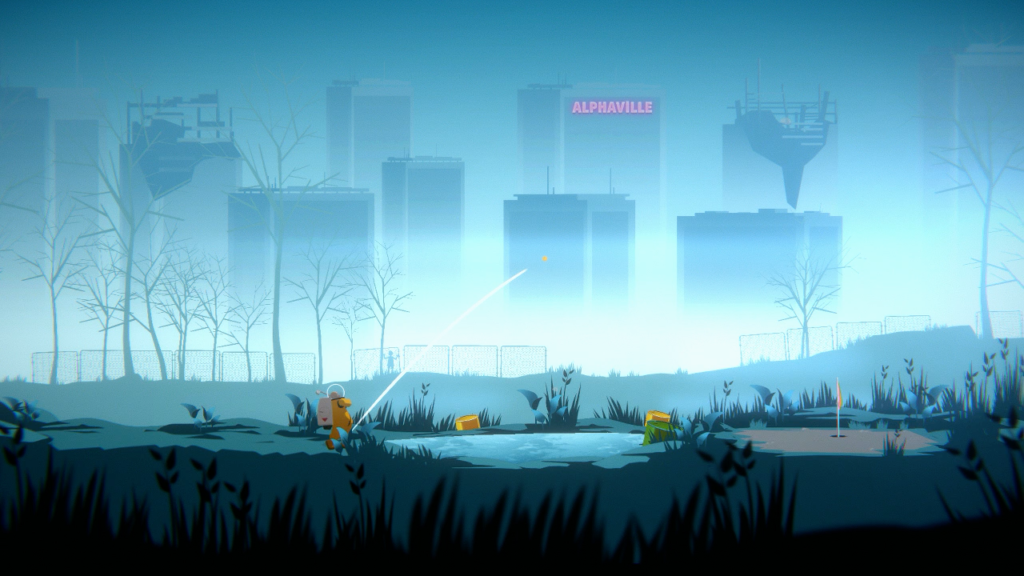
Golf Club Wasteland is steeped in atmosphere. Single images taken from its gameplay are striking: A lone man, dressed in a spacesuit and wielding a golf club, drives a ball across a crumbling cityscape. The spaceman recalls Alan Shepard hitting a golf ball on the moon, but his surroundings show humanity’s folly. An iconic image of our ascendant technological advancement is contrasted against its consequences, capturing where we came from and where we went in a single image.
The remnants of human civilization are equally as striking. Neon advertisements still flicker on most buildings long after the people they are meant to entice have gone extinct, revealing the destructive futility of eternal capitalism and perpetual growth. Some levels are set in old spaceports where the ball can be lost in endless piles of luggage, a heartbreaking remnant of people who thought they would escape only to watch the privileged few leave them behind to die. But Earth is not a dead planet. Rabbits watch the player character from the foreground. Cows with glowing eyes and udders and what I swear are headphones munch on the overgrowth. In one hole a pure white giraffe drinks water from a satellite dish, blissfully unconcerned with the golf game passing in front of its legs.
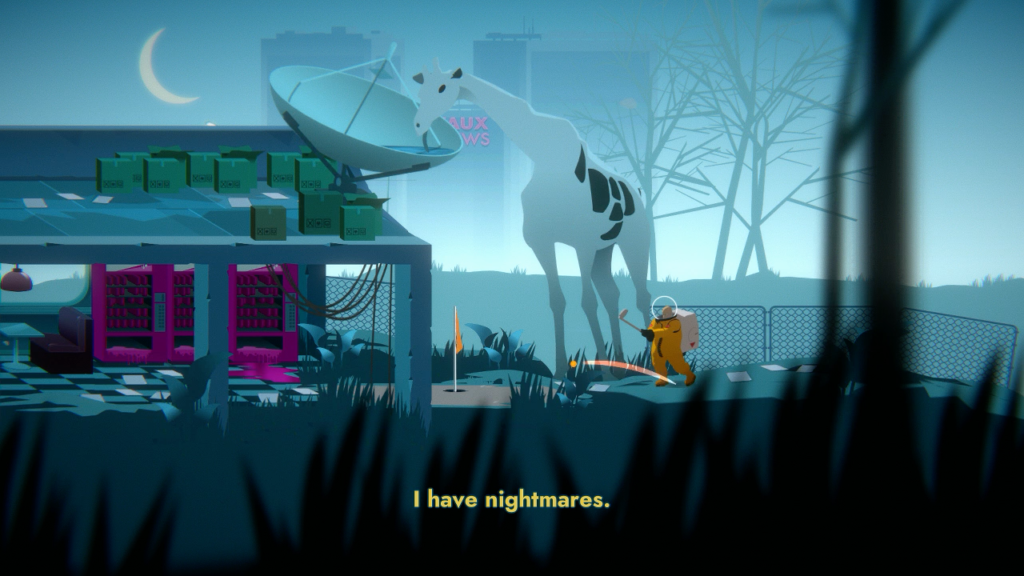
Golf Club Wasteland so vividly evokes a human world that destroyed itself that its opening disclaimer that all “references to public figures and events” are set in a “fictional universe” falls flat. Its further disclaim that it is a “comedy programme” with “no intention to defame” is downright laughable. When the tenth hole features a prominent building with “covfefe” emblazoned on its surface in bright pink lettering, it’s not difficult to see that Golf Club Wasteland knows exactly where to point an accusing finger for this grim golf course’s existence.
As much as the visuals help to create Golf Club Wasteland’s incredible atmosphere, its soundtrack makes major contributions too. The whole experience is backdropped by a seamless broadcast called Radio Nostalgia from Mars. It’s a twisted parody of public radio, complete with a bland and mumbling host who introduces melancholy music and segments where Martians describe their memories of when they used to be Earthlings. An oil executive recalls a boss who used to scream at waiters. A new mother names her child Maxim and marvels that it looks like he can hold Earth in his hand from out his Martian window. The host declares “we’re all in this together” as I see the remains of those who were left apart.
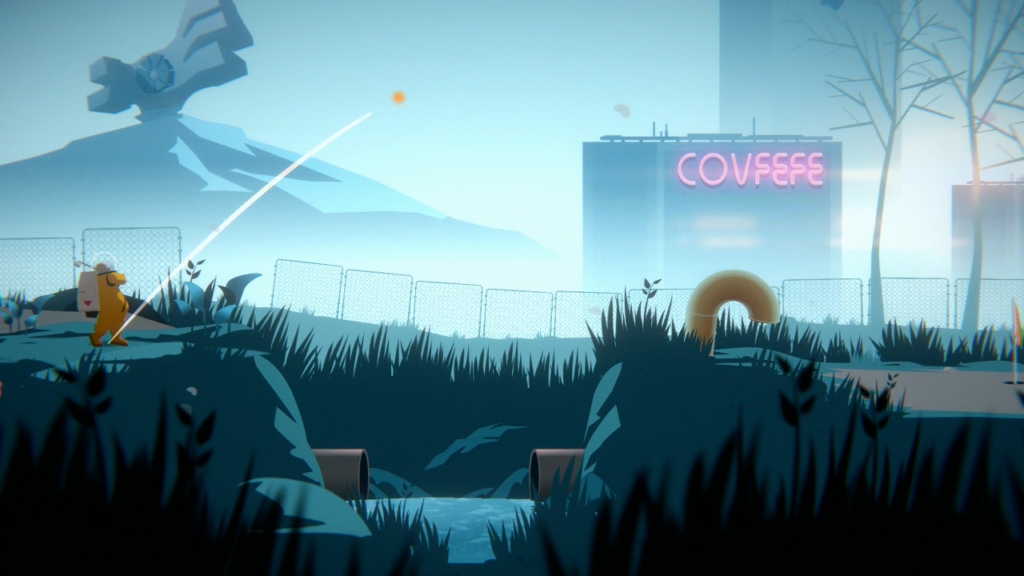
These voices sound almost ordinary. Then the oil executive boasts how he’ll be remembered as a savior of humanity while a golfer plays through the world he helped to destroy then abandoned. It’s a macabre moment, the evidence of this monster’s culpability transformed into a trivial game stereotypically indulged by rich men.
Hitting the ball across the wasteland is a simple affair. I can aim in a 180 degree arc around the player character by pointing in that direction with the joystick. The more pressure I apply in a direction, the harder the player character’s swing. When I press A while aiming, the player character takes the shot. The ball arcs to its destination, bouncing and sliding along obstacles it encounters along the way. The player character then trudges to the ball, or flies to it with their jetpack, and I take my next shot. I repeat this until I successfully hit the ball into the hole. It’s a minimalist and elegant approach to adapting golf into a videogame.
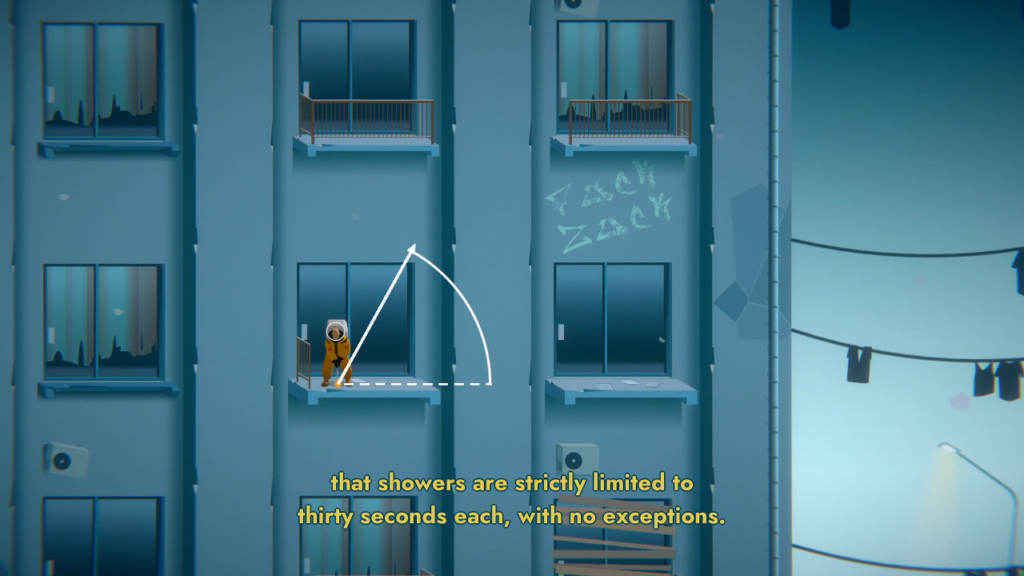
The problem I experience most with Golf Club Wasteland is the golfing mechanics are too simple. Golf is a game of precision and accuracy. I am not given enough information when swinging to be precise or accurate. I can see the angle my ball will travel upwards, but cannot see where the ball will land as it arcs back down. I am forced to guesstimate every shot I make, trusting my eyes and my thumb to make the minute adjustments to keep the ball from landing in the same pond, garbage pile, or toxic waste I duffed it into on my last swing. My eyes and thumb often fail me.
As I venture into Golf Club Wasteland’s most challenging holes, the poignancy created by the sound and visuals is buried by the frustration I feel towards the golfing mechanics. Despite Radio Nostalgia from Mars’ exhortation to “breathe easy, kick back, and reminisce,” the courses grow too difficult and intricate for any such relaxation to be possible.
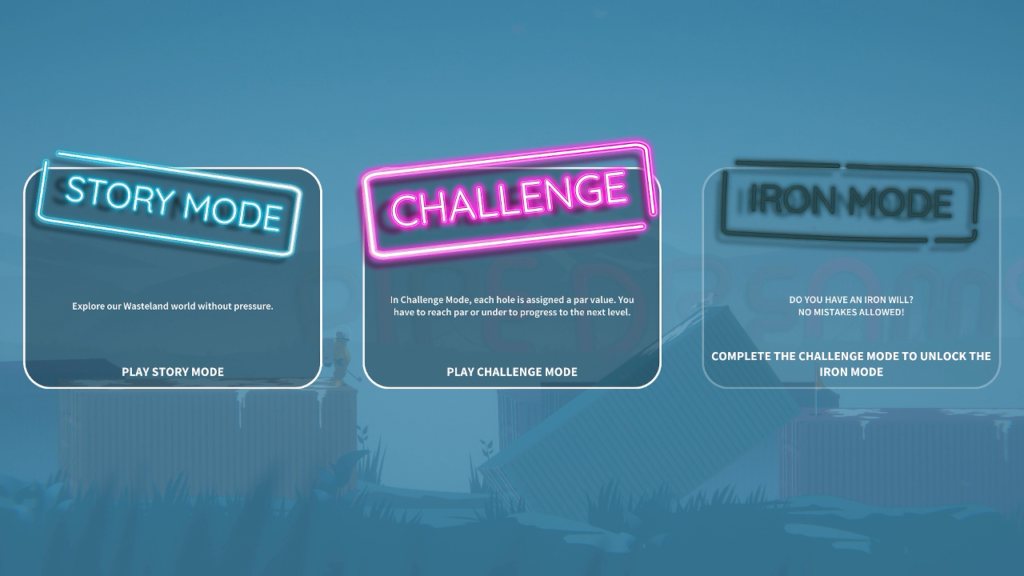
Golf Club Wasteland’s saving grace is it does not pressure me to play well unless I ask it to. The default Story Mode does not care if I sink the ball in two or twenty or two hundred shots. If I’m especially struggling on a hole it will even let me skip it entirely. Each hole does have a par score, and if I match or beat par then I earn a diary entry that gives me more insight into the thoughts and feelings of the voiceless player character.
I can also toggle Challenge mode, which does require me to make par on every hole, and Iron Mode, which makes me restart from the first hole if I fail to make par even once. The frustration I experience playing with no restrictions makes the prospect of earning all the diary entries, let alone finishing Challenge or Iron Modes, an unappealing one. Golf Club Wasteland is intriguing as an atmospheric experience delivering a timely message, but as a golf videogame it’s a double bogey.
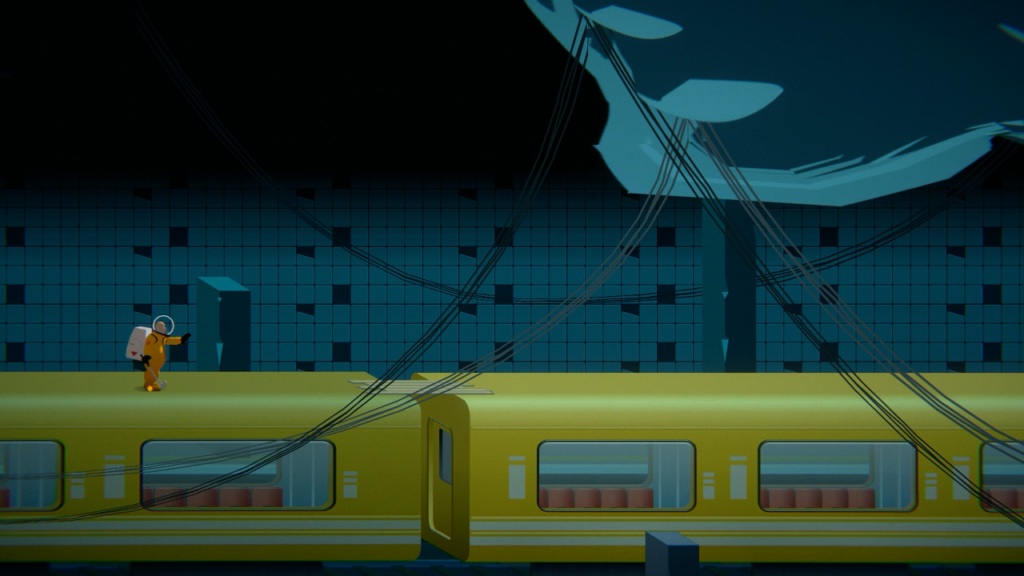
I only wish Golf Club Wasteland trusted its message a little more. I find its initial image of an astronaut golfing on a ruined world captivating. I like that it doesn’t italicize the point it’s trying to make. But as I progress through the holes, the player character becomes less of a symbol and more of an actual character. I start to understand who they are as a person, what motivates them, and why they make the decisions they do after two key holes. Golf Club Wasteland regresses from an open-ended condemnation of unfettered wealth and capitalism into a trite redemption story about a single man. I found the conclusion to the player character’s story sentimental and obvious and much less interesting than that first image.
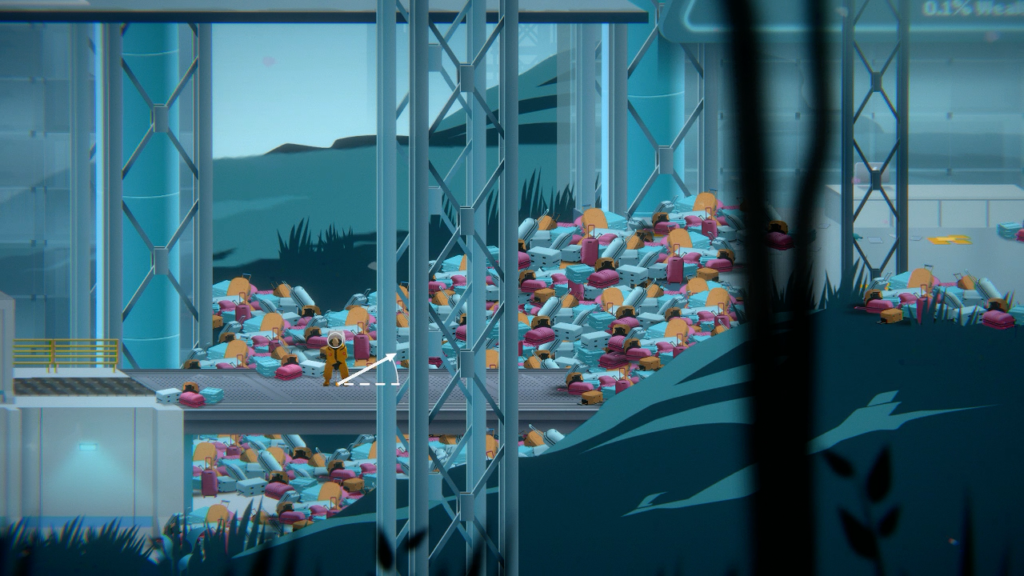
Golf Club Wasteland is a double-headed experience. On one side, it’s an apocalyptic warning delivered in an unorthodox package. Its visual and aural elements combine into evocative landscapes of beautiful ruin and tragic consequence. On the other, it’s a golf videogame that does not provide me with enough feedback about my choices to be remotely enjoyable. Worse still, the further into the thirty-five holes I get, the more the player character becomes a character and less a symbol. I genuinely love Golf Club Wasteland in its first few holes when it is weird and atmospheric, but the more it evolves into an ordinary videogame filled with challenge and narrative, the more that love fades away.